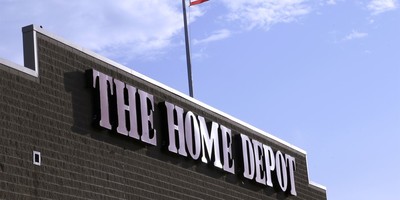SANTA BARBARA, Calif. -- You drive up a steep, rough and winding road to reach Ronald Reagan's ranch in the Santa Ynez mountains. For eight years, 1981 to 1989, this place north of Santa Barbara was the Western White House. Reagan spent nearly a year of his time in office here. Now, what he called Rancho del Cielo is pretty much deserted.

But the ranch, tended by a lone caretaker, is still much like it was when Reagan was alive. It's not open to the public; these days, the old adobe house and 688 surrounding acres are owned and carefully maintained by the conservative Young America's Foundation. The group doesn't have the staff or resources to conduct public tours, but they were kind enough to take me on a visit one afternoon last week.
The first thing that comes to mind as you approach the house is how modest it is. The main part of the building was constructed in 1871. Even after Reagan added a couple of rooms when he bought it in 1975, the whole house measured about 1,500 square feet.
The floors are covered in a brick-patterned linoleum. ("He laid it himself," my guide tells me.) The furniture is plain and comfortable; there are a couple of chairs upholstered in an orange-and-brown patchwork pattern that could have come out of any middle-class American den of the 1970s. Western art hangs on the walls.
The bedroom is small and plain, with what looks like an old Ethan Allen chest and two bedside tables that had to be turned sideways because the room wasn't wide enough to fit them. Reagan's nearby bathroom has a modular shower and a toilet squeezed in a tiny nook.
Any budget hotel down the road has more comfortable accommodations. Reagan, who with his wife was pilloried for having a plutocrat's taste, in fact enjoyed a level of simplicity beyond what most vacationing Americans would accept.
Recommended
The house is nestled on the edge of a mountainside meadow. It's idyllic, but if you drive about five minutes away, you'll find another spot on the property, at the top of a hill, where the president could have built a new home, perhaps an impressive monument to himself, with fabulous views of the Pacific to the west and the valley to the east. Instead, Reagan preferred the little house by the meadow.
Walking around the ranch, you can't help thinking about the current Republican Party and its relationship to Reagan. One feeling the ranch produces -- nearly forces on you -- is the realization that the 1980s were a long time ago. When Reagan took office, the top income tax rate was 70 percent. The Cold War had entered one of its most dangerous phases.
By the end of his administration, Reagan had reduced that confiscatory 70 percent tax rate to 28 percent. And he won the Cold War. Most presidents don't leave much to remember them by. Reagan has two great legacies.
But what does it mean for America today? Certainly low taxes and a strong national defense remain bedrock principles for conservative Republicans. And when Democrats argue, as Sen. Charles Schumer did recently, that the Reaganite "traditional-values kind of arguments and strong foreign policy, all that is over" -- well, someday they might discover otherwise.
But what specific policy proposal would Reagan embrace today to deal with skyrocketing healthcare costs? The credit crunch? Immigration? No one can really say.
Perhaps it would be more instructive to look at the man himself. Over a lifetime of thought and study -- he was 69 when he became president -- Reagan developed a set of core principles that guided whatever he did. To those core principles -- liberty, free enterprise, American exceptionalism -- he added his own personal qualities. He was a serious reader, a self-improver, decidedly non-cynical, avowedly non-Washington and deeply patriotic. A gift for communicating made those qualities instantly recognizable to the American public.
As you walk around the old ranch, and see the private spaces where he spent so much time, you realize perhaps more than ever before that it was Reagan's character that made his triumphs possible. For Republicans, coherent positions on today's policy debates will emerge in time. The tougher question is where they will find a leader like Ronald Reagan again.























Join the conversation as a VIP Member